Hope Technology XCR Pro X2 Brakes
| Where To Buy | |||
|---|---|---|---|
Free shipping on orders over $50 (continental U.S. only).
International shipping available. Some exclusions apply. |
|||
Free shipping on orders over $50 (continental U.S. only).
International shipping available. Some exclusions apply. |
|||

One of the very first companies to ever put a hydraulic brake on a bicycle, Hope Technologies has been around the block and their latest offerings are among our absolute favorites here at Vital. When they announced a new brake for the XC market, we knew we had to give it a spin. As part of our testing we also wanted to understand if this would be a valid option for the trail bike weight weenies out there - keep reading to find out!
Strengths | Weaknesses |
|
|
Hope Tech XCR Pro X2 Highlights
- CNC Machined from high grade forged aluminum billet
- New, vertical piston lever design
- Lightweight minimalist design
- Carbon blade and titanium hardware
- Lever reach adjustment
- Hinged clamp for easy installation
- 10% Power increase over Race Evo lever
- Silver color only
- Weight: 198 grams (front brake - lever, caliper and hose, verified)
- MSRP: £250.00 // €315.00 // $320.00 (ex tax) per side, not including rotors
Initial Impressions
Looking over the new brake for the firs time, the main thing that stands out is the new lever. It retains Hope's traditional reservoir design which allows for easy top-down bleeding (albeit a bit messy, this method does produce great bleeds), but on the XCR it is oriented at a 90-degree angle with the handlebar instead of the usual Hope inline design. The lever body is much slimmer than on the current Tech 3 lever as well. The lever blade is made from carbon, and only offers reach adjustment (which requires the use of an allen key).




The lever clamp is now hinged, which makes installation a little bit easier. Existing Hope mounts can be used to attach shifters and dropper post levers for a clean cockpit setup. The caliper itself is the same X2 caliper that was already in the line-up, but Hope made some tweaks around it as well. The crimped hose connector at the caliper end is smaller and thinner, and the pads feature an aluminum backing plate (the hose connector at the lever end retains the classic olive to facilitate shortening the hoses). All told, the complete assembly has dropped about 50 grams per side in total compared to a Tech 3 lever/X2 caliper combo. The brakes come in silver only with black hoses.



Installation and Set-Up
Installing the brakes followed the basic procedure that is common nowadays with the internal routing seen on most modern bikes - our Trek Supercaliber was no exception. Routing the hose is the same as every brake with a crimped banjo design. Hope sent us a very nice bleed kit to take care of our set, and we used it to top off the brakes after we finished assembling them. The bleed kit will certainly be added to our little collection of tool jewelry, although it should be noted that Hope's "open bath" bleed procedure is a bit more messy compared to many other systems.


Connecting the lever to the bar is a breeze thanks to the hinged clamp design and the SRAM MatchMaker mounts keep the bar looking clean and tidy. Hope sent us both right and left options for the matchmakers to use with a dropper lever under the left grip. We ended up using the left one on the right side as the right one placed our SRAM shifter too close to the grip area. This tester likes the edge of the upshift button to be aligned with the edge of the grip and this was made possible by using the “wrong” side MatchMaker.

To complete our setup we installed Hope’s own floating rotors, which have also undergone a recent facelift. In the workstand, we couldn’t quite get rid of rubbing against the pads - this was when the brakes were brand new and unridden. After checking that the post mounts were properly flush and the rotors almost perfectly true, we tried to squeeze out a bit of oil out of the lever to open up some space in the caliper, it didn't help because the natural setting of the pads is very very close to the braking surface in the rotor - out of the box it was tricky to get them perfect.


Having had little success on the bike stand, we went out for a quick neighborhood spin to bed in the pads and the rotors. This makes the rotor’s braking surface flatter and smoother and gets rid of any roughness on the surface of the pads (in addition to removing troublesome residues from the manufacturing process of course). After that we got rid of any unwanted rubbing noise during riding - definitely something we recommended doing before wasting time in the workstand. As for the hardware, the caliper bolts are very nicely made and the adaptor is CNC’ed to perfection.



On The Trail
After some proper pulls on the brakes, the pads and rotors bedded in nicely and we got to experience the full potential of the XCR brakes. The lever shape is nice and the travel is consistent through the downhills. The lever action is very light thanks to it’s simple linkage lacking design. Since Hope designed the XCR with low weight in mind, the lever is lacking any bite-point adjustment and the lever throw is basically dependent on the space between the pads and the rotor. Luckily, the lever travel and throw felt just right for this tester, who likes to run the lever pretty close to the grips.

As far as brake power goes, there’s no extra “magic” to be found here, we didn’t feel a significant difference with the most obvious competition which is the Shimano XTR 9100 race brake set. However, in the modulation department, we really enjoyed the performance of the XCRs on the very dry and dusty trails we tested on. Finessing the front brakes is easy and we had lots of control over the power delivery - we didn’t lose grip even once due to unwanted brake locking or something like that.

Would these brakes be ready for a little heavier action, if you wanted to drop some weight from your trusty trail bike for example? We feel like the answer is no, there is not quite enough power on tap for more demanding riding, and steep terrain might see this brake struggle a bit more with heat management (we did not experience any issues during testing but we did not use the brakes on particularly long or steep trails). Depending on how you would define it, you could get away with running the XCR on your favorite downcountry bike to bling it out a little.

Things That Could Be Improved
As mentioned in the beginning, assembling and adjusting the brakes took some time due the to tiny space between the pads - something that caused unwanted brake rubbing on the stand. This problem went away as we bedded in the pads and trued the caliper again. That’s not much of a problem if you're familiar with the 5mm allen key and know the basic principles of aligning the caliper over the brake rotor. If the set is being installed at your local bikeshop - tell them to bed in the pads before the final adjustment, it will save your mechanic much headache.
The MatchMaker mounts positioned our SRAM shifter in a weird position compared to our preferred one, so we used them on the opposite sides - the left one on the right lever basically. It worked out great in the end. The MatchMaker mount’s angle is fixed - it felt good for this tester, but maybe not for everyone. You can always use the original clamp of course but the MatchMaker is a nice touch that really cleans up the cockpit.
Long Term Durability
We’ve had a few months on the new XCRs now with no longevity issues to report on. Previous experience with Hope brakes points to many seasons of trouble-free use ahead, and there are plenty of spare parts available to rebuild the entire brake if need be.
What’s The Bottom Line?
Hope had some very specific goals in mind when designing the new XCR brake - most importantly it had to be light both in terms of actual weight as well as in terms of lever feel. The final product ticks both boxes, and we can also report that it meets the usual Hope standards of build quality and modulation, which makes it a great option for XC racers looking to add a little bling to their rigs. It doesn’t quite cut the mustard as a trail bike brake, unless you ride somewhere relatively flat, but that wasn’t part of the design brief in the first place anyway. All in all, XC mission accomplished for Hope, and a clear improvement over the previous Race Evo lever.
More information at www.hopetech.com.
About The Reviewer
Yonatan Yatom - Age: 27 // Years Riding MTB: 15 // Height :6'0" (1.83m) // Weight: 161 pounds (75kg)
Yonatan is a born racer and a bike addict. As a true competitor the only thing on his mind when lining up in the start gate is the finish line. With a background in local enduro and DH races and even the occasional appearance in an Enduro World Series on his resume, Yonatan has more recently applied himself to building bigger legs and trying his luck racing XC as well. Throughout the week he’ll be manning the spanners at the bike shop, reading about new stuff on the internet, and thinking about how to improve everything he rides. Yonatan’s riding style is fully pinned, smooth, and quiet but he can be nasty to his bike when needed.
Specifications
| Where To Buy | |||
|---|---|---|---|
Free shipping on orders over $50 (continental U.S. only).
International shipping available. Some exclusions apply. |
|||
Free shipping on orders over $50 (continental U.S. only).
International shipping available. Some exclusions apply. |
|||


























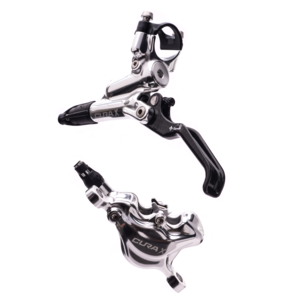
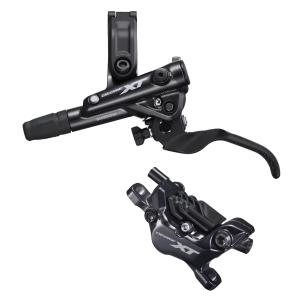

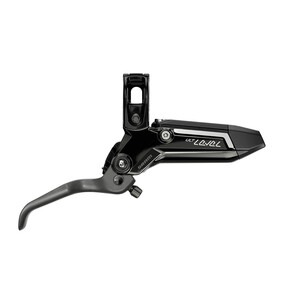


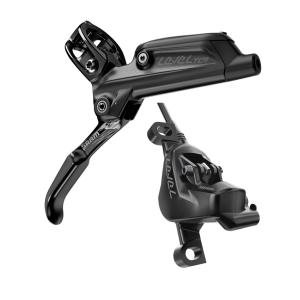
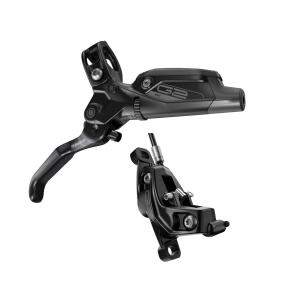








14 comments
Post a reply to: Long-Term Testing Hope's New Cross-Country XCR Pro Brake